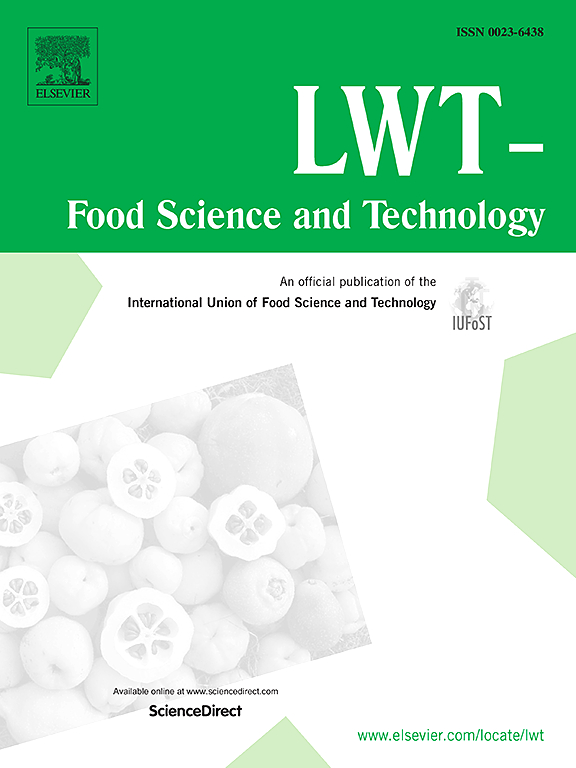Comparative fatty acids and nutritional components and transcriptomic analysis of fatty acids accumulation in seed oils from different tea varieties
IF 6
1区 农林科学
Q1 FOOD SCIENCE & TECHNOLOGY
引用次数: 0
Abstract
Tea seed oil, a valuable byproduct extracted from tea plants, has gained attention as a potential edible oil. However, the composition of fatty acids and the mechanisms underlying their accumulation in tea seed oils remain largely unexplored. The study revealed significant variations in seed oil content across various tea varieties. Subsequently, the fatty acid composition, chemical properties, and the genetic basis of fatty acid differences were assessed in eleven representative tea accessions and one Camellia oleifera (YC). The results demonstrated that tea seed oils exhibited higher total polyunsaturated fatty acid content compared to YC oil, along with increased iodine and saponification values. Moreover, tea seed oils contained higher α-tocopherol, γ-tocotrienol and catechins. Importantly, gallocatechin gallate (GCG), epicatechin (EC) and catechin gallate (CG) were identified in tea seed oils, which was previously unreported in YC oil. Transcriptome analysis detected 5811 differentially expressed genes (DEGs), and correlation analysis identified 17 key genes, including fatty acid desaturase (CSS013596), crucial for regulating the fatty acid composition, particularly the accumulation of C16:1. These preliminary findings provide significant insights into the fatty acid composition and its regulation in tea seed oils, highlighting their potential as a promising alternative to traditional oil tea and other vegetable oils.
茶籽油是从茶树中提取的一种有价值的副产品,作为一种潜在的食用油已受到关注。然而,茶籽油中脂肪酸的组成及其积累机制在很大程度上仍未得到探索。研究发现,不同茶叶品种的种子油含量存在显著差异。随后,对 11 个代表性茶叶品种和 1 个油茶品种(YC)的脂肪酸组成、化学特性以及脂肪酸差异的遗传基础进行了评估。结果表明,与油茶籽油相比,茶籽油的总多不饱和脂肪酸含量更高,碘值和皂化值也更高。此外,茶籽油还含有较高的α-生育酚、γ-生育三烯酚和儿茶素。重要的是,在茶叶籽油中发现了没食子儿茶素没食子酸酯(GCG)、表儿茶素(EC)和儿茶素没食子酸酯(CG),这在以前的崖柏油中是没有报道过的。转录组分析检测到 5811 个差异表达基因(DEGs),相关分析确定了 17 个关键基因,包括脂肪酸去饱和酶(CSS013596),它对调节脂肪酸组成,特别是 C16:1 的积累至关重要。这些初步研究结果为了解茶籽油的脂肪酸组成及其调控提供了重要依据,凸显了茶籽油作为传统油茶和其他植物油替代品的潜力。
本文章由计算机程序翻译,如有差异,请以英文原文为准。
求助全文
约1分钟内获得全文
求助全文
来源期刊

LWT - Food Science and Technology
工程技术-食品科技
CiteScore
11.80
自引率
6.70%
发文量
1724
审稿时长
65 days
期刊介绍:
LWT - Food Science and Technology is an international journal that publishes innovative papers in the fields of food chemistry, biochemistry, microbiology, technology and nutrition. The work described should be innovative either in the approach or in the methods used. The significance of the results either for the science community or for the food industry must also be specified. Contributions written in English are welcomed in the form of review articles, short reviews, research papers, and research notes. Papers featuring animal trials and cell cultures are outside the scope of the journal and will not be considered for publication.
 求助内容:
求助内容: 应助结果提醒方式:
应助结果提醒方式:


